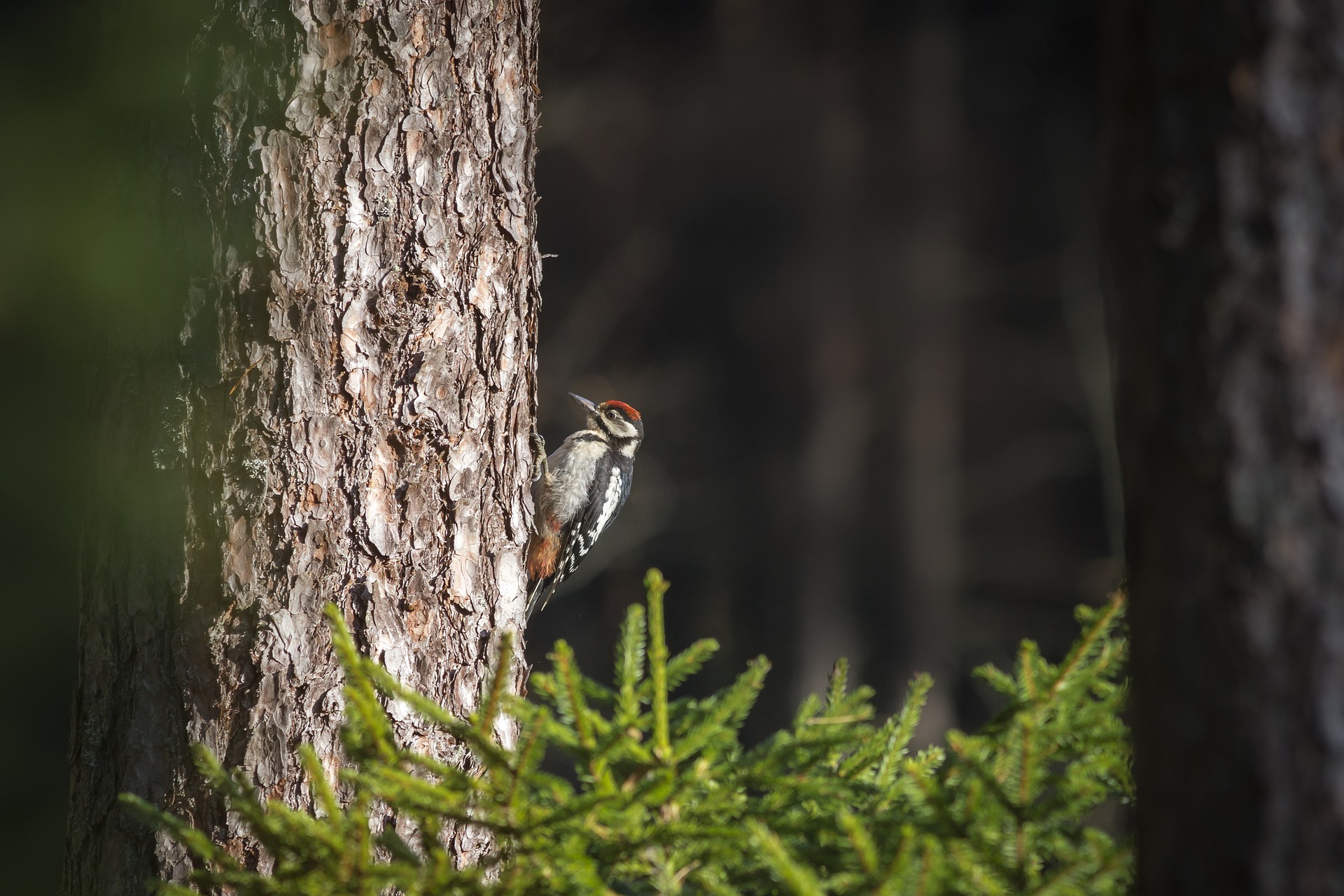The Great Spotted Woodpecker (Dendrocopos major) is a medium-sized woodpecker species found across Europe and parts of Asia. Here are some key features and characteristics of the Great Spotted Woodpecker:
- Appearance: Great Spotted Woodpeckers have a striking black-and-white plumage pattern with bold black and white stripes on their back and wings. They have a white face with a distinctive red patch at the nape of the neck in males, while females have a black patch instead of red. Both sexes have a long, chisel-shaped bill, which they use for pecking and drilling into wood.
- Size: Great Spotted Woodpeckers are medium-sized woodpeckers, measuring around 23 to 26 centimeters (9 to 10 inches) in length, with a wingspan of approximately 34 to 39 centimeters (13 to 15 inches).
- Habitat: Great Spotted Woodpeckers inhabit a variety of wooded habitats, including deciduous and mixed forests, woodlands, parks, and gardens. They prefer areas with mature trees and abundant deadwood, which they use for foraging and excavating nest cavities.
- Diet: Great Spotted Woodpeckers are primarily insectivorous, feeding on a variety of insects, larvae, and other invertebrates found in wood, bark, and tree crevices. They use their strong bills to hammer into wood and extract prey items. In addition to insects, they also consume seeds, nuts, fruits, and sap, particularly in winter when insect prey is scarce.
- Behavior: Great Spotted Woodpeckers are highly arboreal birds, spending much of their time climbing and foraging on tree trunks and branches. They have specialized adaptations for clinging to vertical surfaces, including stiff tail feathers and strong toes with sharp claws. They are also known for their drumming behavior, where they rapidly peck on resonant surfaces to communicate with other woodpeckers and establish territory.
- Breeding: During the breeding season, which typically occurs from March to June, Great Spotted Woodpeckers excavate nest cavities in dead or decaying trees, usually in the trunk or large branches. The female lays a clutch of eggs, typically ranging from 4 to 6 eggs, which she incubates for about two weeks. Both parents participate in feeding and caring for the chicks after they hatch.
- Conservation: Great Spotted Woodpeckers are widespread and relatively common throughout their range, although they may face threats from habitat loss, fragmentation, and changes in forest management practices. Conservation efforts aimed at preserving mature forests and maintaining habitat diversity are important for ensuring the continued survival of this species.
Overall, the Great Spotted Woodpecker is a charismatic and adaptable bird species known for its distinctive appearance, behavior, and ecological role in forest ecosystems.
Views: 11
Subscribe to the newsletter:
